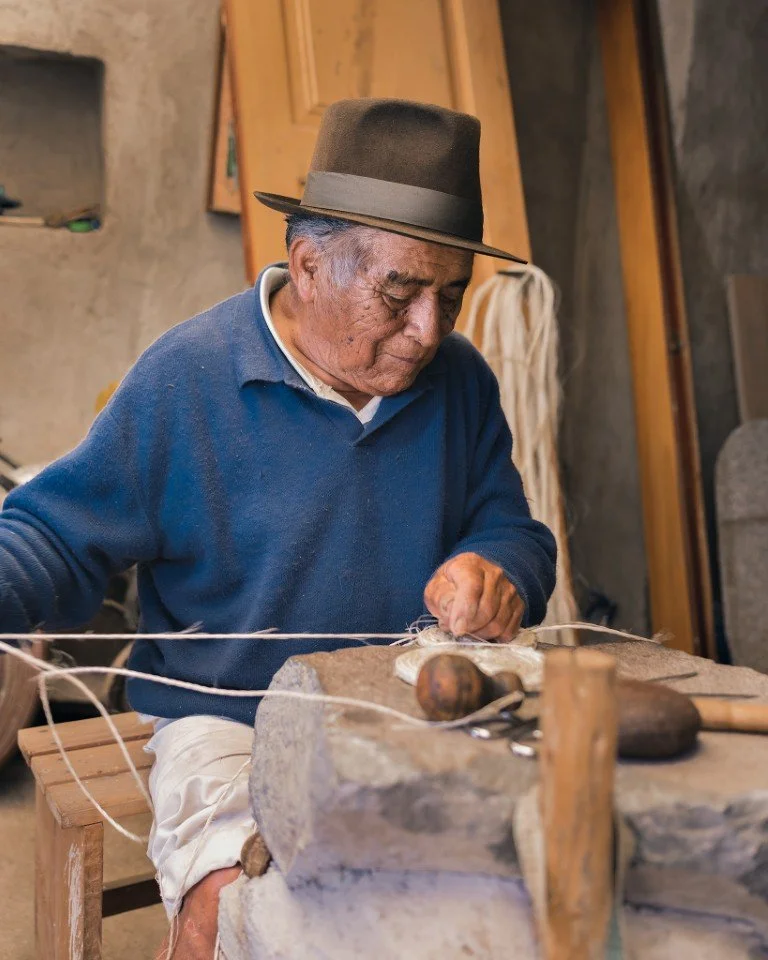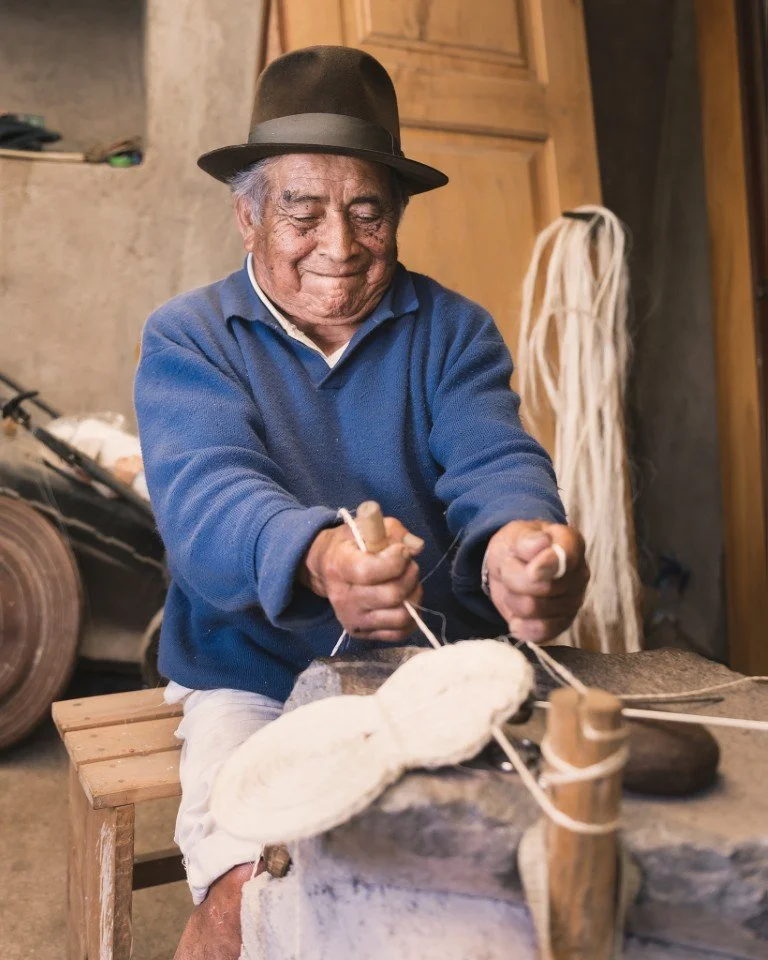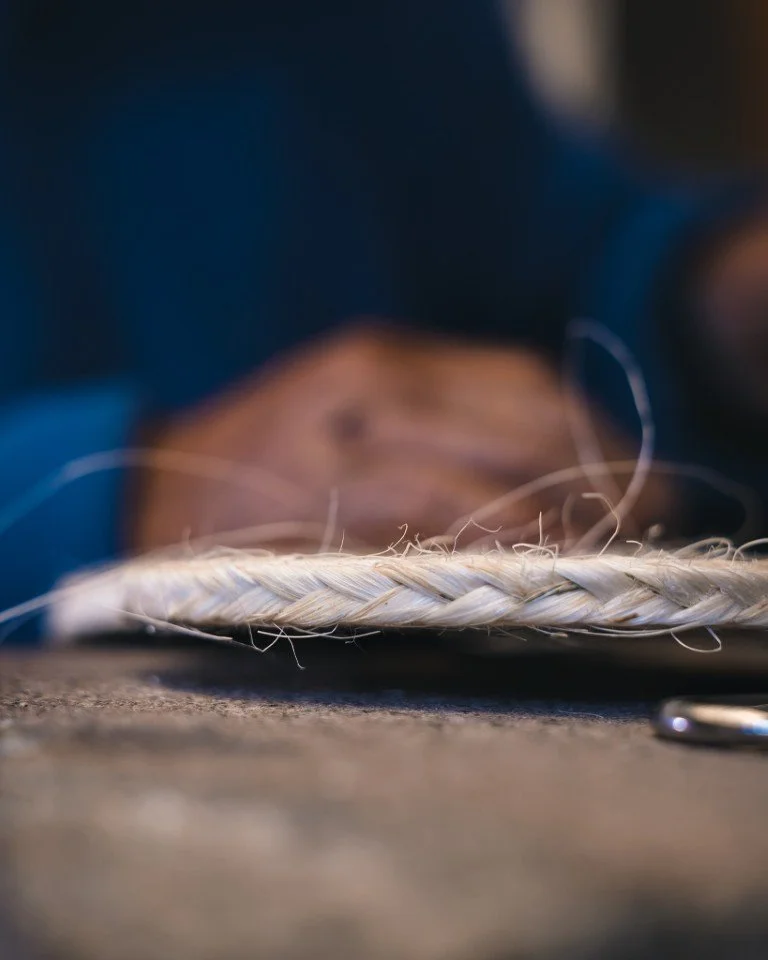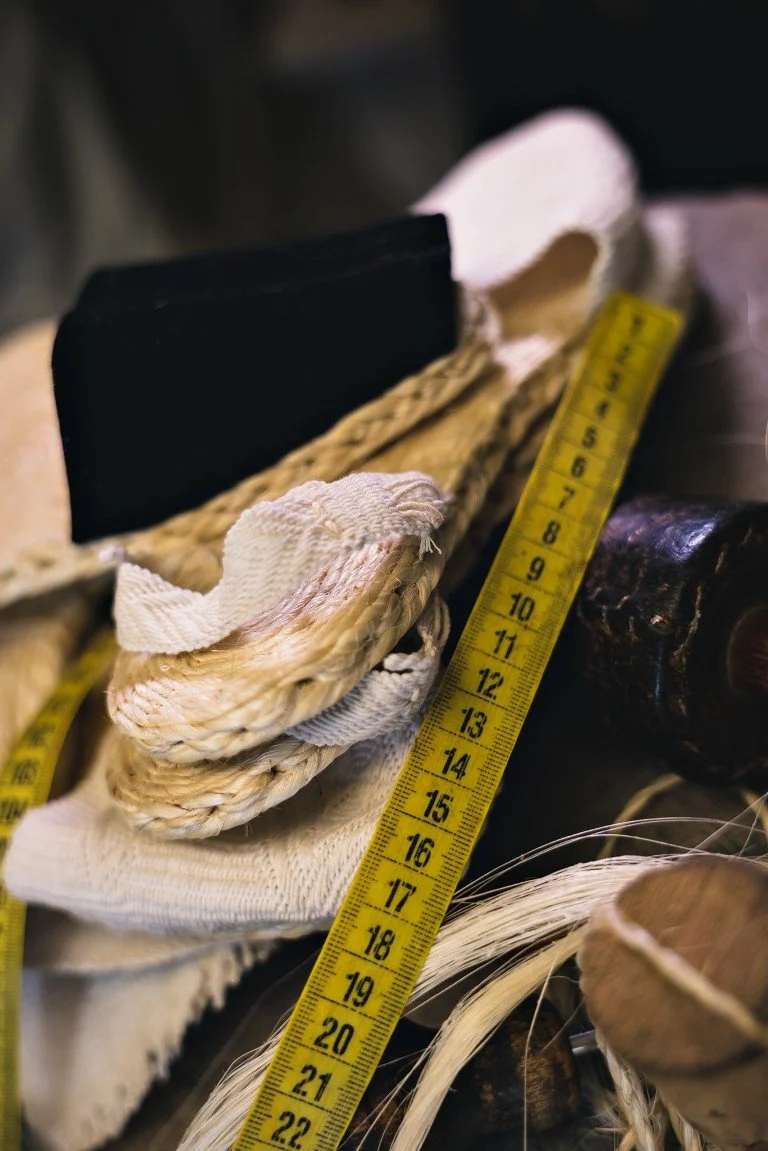
José Mariano Alta
The Living Legacy of Santa Bárbara’s Last Alpargata Maker
José Mariano Alta, affectionately known as Papaku by his family and community, is an 89-year-old Kichwa master artisan who continues to preserve one of the most significant traditional practices of the Andean textile heritage: the manual crafting of alpargatas (handmade rope sandals) from cabuya (a native agave fiber).
Born in the community of Topo Alto and later settling in Santa Bárbara—where he currently lives with his children and granddaughters—Taita Mariano is a symbol of wisdom, resilience, and a deep commitment to the living memory of his culture. Despite only receiving formal education up to the fourth grade, he played important community roles as a traditional prayer leader (rezador) and literacy educator in various communities of the Cotacachi canton.
His story as an artisan began in his youth when he learned to make alpargatas entirely by hand. He was introduced to the craft by the custodian of the Anrrabí school. From gathering cabuya fibers and making cadejos (fiber cords), to acquiring handwoven cloths from local women in Anrrabí and Chilcapamba, he learned each part of the process through dedication and self-discipline.
Papaku didn’t just make alpargatas—he wove them with identity. His designs became well known for their high quality and durability, attracting people from neighboring communities who sought out his work. His home, which also serves as his workshop, still holds traditional tools: smooth river stones, wooden pieces he cut from nearby forests, and metal instruments such as the kurku punsun and almarada, which he acquired during his walks through the San José de Cotacachi area.
For many years, he sold his alpargatas throughout the communities of Cotacachi and the Otavalo valley. One of his main markets was the renowned Plaza de Ponchos. There, he would sell his products for six or seven sucres, recalling with fondness how he would return home happy after those sales.
Over time, a hearing condition limited his ability to travel, but not his dedication. Thanks to the loyalty of long-time customers and acquaintances, he continued to receive orders from across the canton. His reputation as Cotacachi’s last alpargata maker remains intact.
Throughout the years, he has sought to pass on his knowledge to interested individuals: private apprentices, foreign visitors, and even participants in municipal programs. However, most have abandoned the process due to the complexity of the craft. Even so, he continues to hope that one of his children or granddaughters will choose to learn and carry on this ancient tradition.
Today, José Mariano Alta remains active, handcrafting alpargatas using the same ancestral techniques and weaving cloths with his own hands. His work is more than artisanal—it is a symbol of cultural resilience, Indigenous identity, and collective memory. His legacy stands as a testament to an era resisting oblivion, and a powerful call to value and protect traditional knowledge.
Digital Textile Map
*
Digital Textile Map *
Gallery
*
Gallery *











